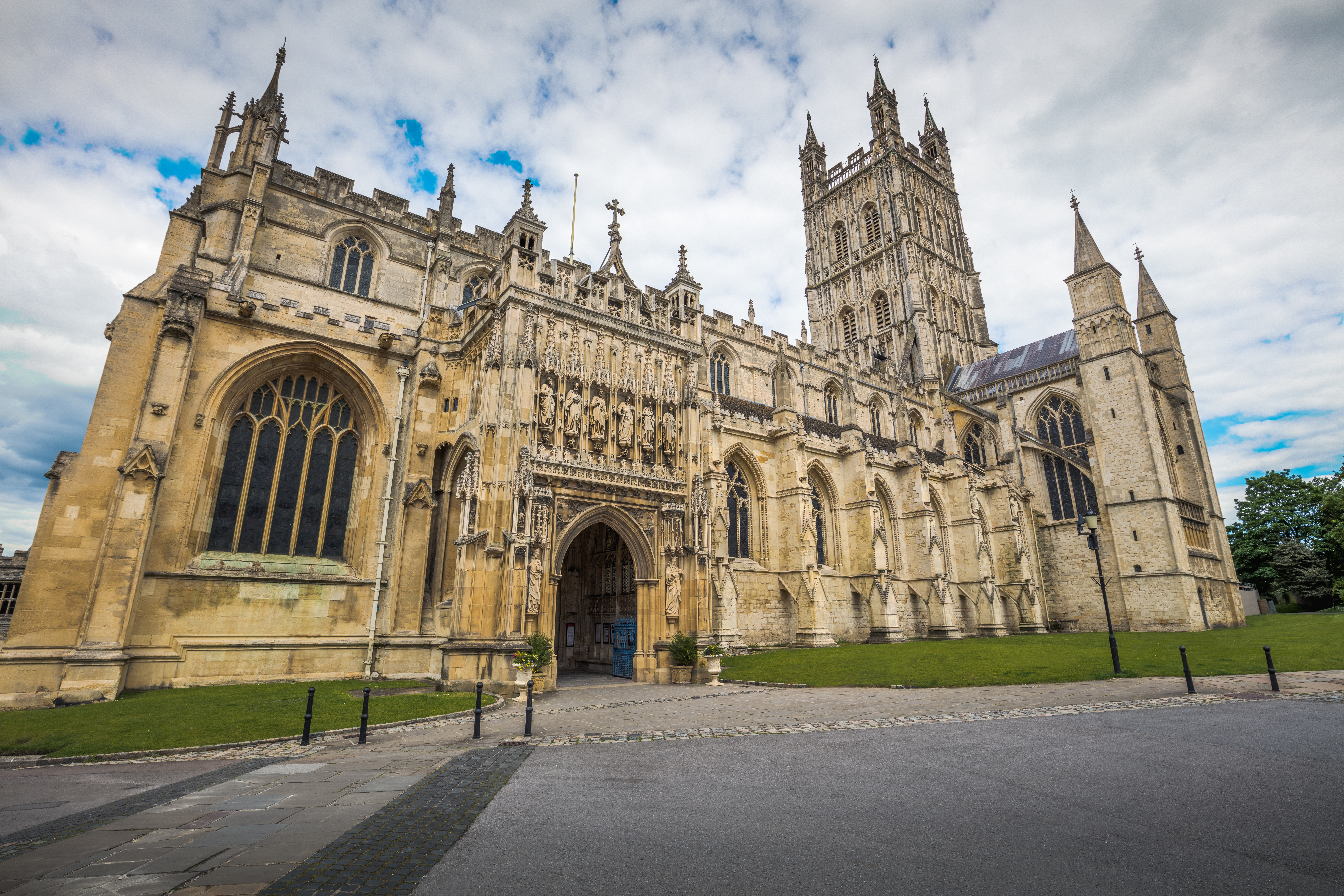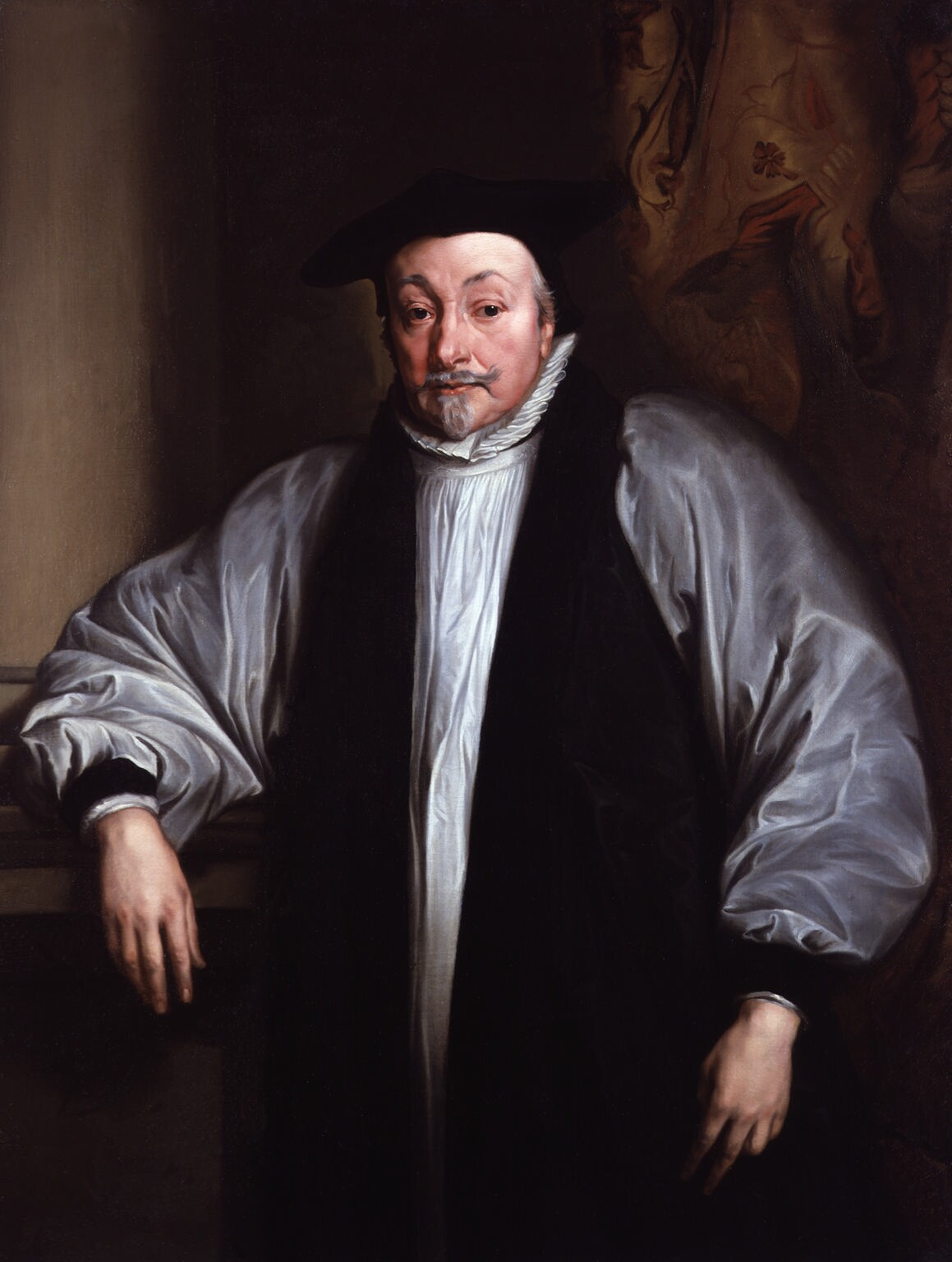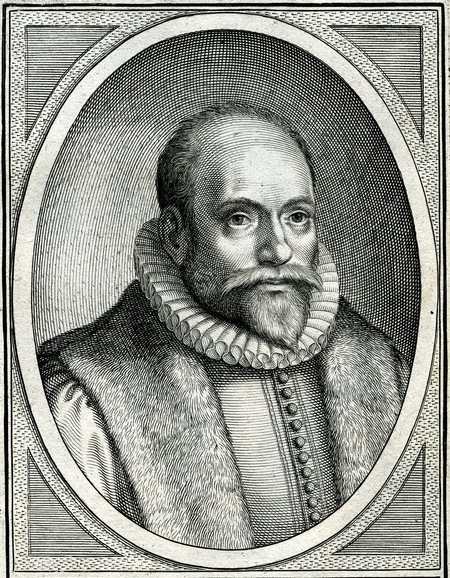|
Robert Harley (1579–1656)
Sir Robert Harley (baptised 1 March 1579 – 6 November 1656) was an England, English statesman who served as Master of the Mint for Charles I of England, Charles I. A devout Puritan, he supported Parliament of England, Parliament in the Wars of the Three Kingdoms. Life He was the son of Thomas Harley of Brampton Bryan Castle in Herefordshire and his wife Margaret, daughter of Sir Andrew Corbet (died 1578), Andrew Corbet. He entered Oriel College, Oxford in 1595, earning a BA in 1599. He entered Middle Temple in 1599. He was invested as a Knight of the Bath on 25 July 1603. After his first marriage in 1603, he served in various local offices in Herefordshire and Radnorshire, including representing Radnor (UK Parliament constituency), Radnor in Parliament of England, Parliament in 1604, Herefordshire (UK Parliament constituency), Herefordshire in 1624 and 1626 and Evesham (UK Parliament constituency), Evesham in 1628. In 1623 he had married Brilliana, Lady Harley, Brilliana, da ... [...More Info...] [...Related Items...] OR: [Wikipedia] [Google] [Baidu] |
Sir Robert Harley
''Sir'' is a formal honorific address in English for men, derived from Sire in the High Middle Ages. Both are derived from the old French "" (Lord), brought to England by the French-speaking Normans, and which now exist in French only as part of "", with the equivalent "My Lord" in English. Traditionally, as governed by law and custom, Sir is used for men who are knights and belong to certain orders of chivalry, as well as later applied to baronets and other offices. As the female equivalent for knighthood is damehood, the ''suo jure'' female equivalent term is typically Dame. The wife of a knight or baronet tends to be addressed as Lady, although a few exceptions and interchanges of these uses exist. Additionally, since the late modern period, Sir has been used as a respectful way to address a man of superior social status or military rank. Equivalent terms of address for women are Madam (shortened to Ma'am), in addition to social honorifics such as Mrs, Ms, or Miss. Ety ... [...More Info...] [...Related Items...] OR: [Wikipedia] [Google] [Baidu] |
Brilliana, Lady Harley
Brilliana, Lady Harley (1598 – 29 October 1643), ''née'' Brilliana Conway, was an English letter writer. Her name was coined by her father, Sir Edward Conway, English governor of Brielle (called Brill in English) in Holland with the suffix ''-ian'' as a demonym and the Latin feminine suffix ''-a''. Letters Some of Lady Harley's 375 letters to her husband, Sir Robert Harley and her son Sir Edward Harley survive and show her to be an educated literary woman, at home in several languages. She was able to keep her husband informed of local political affairs when he was absent from home at Brampton Bryan in northwest Herefordshire, attending Parliament or for other reasons, and organised the collection of information locally for the Parliamentary Committee on Scandalous Ministers. She was deeply religious, and her letters frequently repeat religious sentiments and encouraged her family in their chosen Puritan practices. The letters also contain passages relating to personal det ... [...More Info...] [...Related Items...] OR: [Wikipedia] [Google] [Baidu] |
Gloucester
Gloucester ( ) is a cathedral city, non-metropolitan district and the county town of Gloucestershire in the South West England, South West of England. Gloucester lies on the River Severn, between the Cotswolds to the east and the Forest of Dean to the west; it is sited from Monmouth, from Bristol, and east of the England and Wales border, border with Wales. Gloucester has a population of around 132,000, including suburban areas. It is a port, linked via the Gloucester and Sharpness Canal to the Severn Estuary. Gloucester was founded by the Roman Empire, Romans and became an important city and ''Colonia (Roman), colony'' in AD 97, under Nerva, Emperor Nerva as ''Glevum, Colonia Glevum Nervensis''. It was granted its first charter in 1155 by Henry II of England, Henry II. In 1216, Henry III of England, Henry III, aged only nine years, was crowned with a gilded iron ring in the Chapter House of Gloucester Cathedral. Gloucester's significance in the Middle Ages is unde ... [...More Info...] [...Related Items...] OR: [Wikipedia] [Google] [Baidu] |
Hereford
Hereford ( ) is a cathedral city and the county town of the ceremonial county of Herefordshire, England. It is on the banks of the River Wye and lies east of the border with Wales, north-west of Gloucester and south-west of Worcester. With a population of 61,900 in 2024, it is the largest settlement in Herefordshire. An early town charter from 1189, granted by Richard I of England, describes it as "Hereford in Wales". Hereford has been recognised as a city since time immemorial, with the status being reconfirmed in October 2000. Hereford has been a civil parish since 2000. Products from Hereford include cider, beer, leather goods, nickel alloys, poultry, chemicals and sausage rolls, as well as the Hereford breed of cattle. Toponymy The Herefordshire edition of Cambridge County Geographies states "a Welsh derivation of Hereford is more probable than a Saxon one", but the name "Hereford" is also said to come from the Anglo-Saxon "''here''", an army or formation of s ... [...More Info...] [...Related Items...] OR: [Wikipedia] [Google] [Baidu] |
Henry Grey, 1st Earl Of Stamford
Henry Grey, 1st Earl of Stamford ( 1599 – 21 August 1673), known as the Lord Grey of Groby from 1614 to 1628, was an English nobleman and military leader. He was the eldest son of Sir John Grey and Elizabeth Nevill. His mother was probably a daughter of Edward Nevill, 8th Baron Bergavenny (died 1622) and his wife Rachel Lennard. Henry succeeded his paternal grandfather, Henry Grey, 1st Baron Grey of Groby, as second Baron Grey of Groby in July 1614. His paternal grandmother was Anne Windsor, youngest daughter of William Windsor, 2nd Baron Windsor and his first wife Margaret Sambourne. His great-grandfather Lord John Grey of Pirgo was son of Thomas Grey, 2nd Marquess of Dorset and younger brother of Henry Grey, 1st Duke of Suffolk. Life and career Henry Grey matriculated at Trinity College, Cambridge in 1615, and was granted an M.A. that year, during the visit of King James I of England. He married Lady Anne Cecil, daughter of William Cecil, 2nd Earl of Exeter by ... [...More Info...] [...Related Items...] OR: [Wikipedia] [Google] [Baidu] |
Bishops Wars
The Bishops' Wars were two separate conflicts fought in 1639 and 1640 between Scotland and England, with Scottish Royalists allied to England. They were the first of the Wars of the Three Kingdoms, which also include the First and Second English Civil Wars, the Irish Confederate Wars, and the 1650 to 1652 Anglo-Scottish War. In 1637, Charles I, then king of both Scotland and England, imposed changes in religious practice on the Church of Scotland. These were strongly opposed by many Scots who, in 1638, signed a National Covenant and became known as Covenanters. The General Assembly of the Church of Scotland then expelled bishops from the church, turning a religious dispute into a struggle for political supremacy. The new Covenanter government raised an army to prevent Charles using force to restore his authority. The First Bishops' War began in early 1639, when minor skirmishing between Covenanters and Scottish Royalists took place in north-east Scotland. In June, English ... [...More Info...] [...Related Items...] OR: [Wikipedia] [Google] [Baidu] |
Laudian
Laudianism, also called Old High Churchmanship, or Orthodox Anglicanism as they styled themselves when debating the Tractarians, was an early seventeenth-century reform movement within the Church of England that tried to avoid the extremes of Roman Catholicism and Puritanism by building on the work of Richard Hooker, and John Jewel and was promulgated by Archbishop William Laud and his supporters. It rejected the predestination upheld by Calvinism in favour of free will, and hence the possibility of salvation for all men through objective work of the sacraments. Laudianism had a significant impact on the Anglican high church movement and its emphasis on the sacraments, personal holiness, beautiful liturgy, and the episcopate. Laudianism was the culmination of the move to Arminianism in the Church of England, and led directly to the Caroline Divines, of which Laud was one of the first. The expression of this since the Oxford movement is often called Central churchmanship. Th ... [...More Info...] [...Related Items...] OR: [Wikipedia] [Google] [Baidu] |
Ship Money
Ship money was a tax of medieval origin levied intermittently in the Kingdom of England until the middle of the 17th century. Assessed typically on the inhabitants of coastal areas of England, it was one of several taxes that English monarchs could levy by prerogative without the approval of Parliament. Queen Elizabeth I levied this tax to pay for a navy. The attempt of King Charles I from 1634 onwards to levy ship money during peacetime and extend it to the inland counties of England without parliamentary approval provoked fierce resistance, and was one of the grievances of the English propertied class in the lead-up to the English Civil War. Traditional practice The Plantagenet kings of England had exercised the right of requiring the maritime towns and counties to furnish ships in time of war, and this duty was sometimes commuted for a money payment. Although several statutes of Edward I and Edward III, notably their confirmations of Magna Carta, had made it illegal for the ... [...More Info...] [...Related Items...] OR: [Wikipedia] [Google] [Baidu] |
Long Parliament
The Long Parliament was an Parliament of England, English Parliament which lasted from 1640 until 1660, making it the longest-lasting Parliament in English and British history. It followed the fiasco of the Short Parliament, which had convened for only three weeks during the spring of 1640 after an Personal Rule, 11-year parliamentary absence. In September 1640, Charles I of England, King Charles I issued writs summoning a parliament to convene on 3 November 1640.This article uses the Julian calendar with the start of year adjusted to 1 January – for a more detailed explanation, see Old Style and New Style dates#Differences between the start of the year, old style and new style dates: differences between the start of the year. He intended it to pass financial bills, a step made necessary by the costs of the Bishops' Wars against Kingdom of Scotland, Scotland. The Long Parliament received its name from the fact that, by Act of Parliament, it stipulated it could be dissolved only ... [...More Info...] [...Related Items...] OR: [Wikipedia] [Google] [Baidu] |
Short Parliament
The Short Parliament was a Parliament of England that was summoned by King Charles I of England on 20 February 1640 and sat from 13 April to 5 May 1640. It was so called because of its short session of only three weeks. After 11 years of personal rule between 1629 and 1640, and on the advice of the Earl of Strafford, Charles recalled Parliament to obtain money to finance his military struggle with Scotland in the Bishops' Wars. However, like its predecessors, the new parliament had more interest in redressing grievances than in voting the King funds for his war against the Scottish Covenanters. John Pym, MP for Tavistock, quickly emerged as a major figure in debate; his long speech on 17 April expressed the refusal of the House of Commons to vote subsidies unless royal abuses were addressed. John Hampden, in contrast, was persuasive in private: he sat on nine committees. A flood of petitions concerning royal abuses were coming up to Parliament from the country. Charles's ... [...More Info...] [...Related Items...] OR: [Wikipedia] [Google] [Baidu] |
Arminian
Arminianism is a movement of Protestantism initiated in the early 17th century, based on the Christian theology, theological ideas of the Dutch Reformed Church, Dutch Reformed theologian Jacobus Arminius and his historic supporters known as Remonstrants. Dutch Arminianism was originally articulated in the ''Remonstrance of 1610, Remonstrance'' (1610), a theological statement submitted to the States General of the Netherlands. This expressed an attempt to moderate the doctrines of Calvinism related to its interpretation of Predestination in Calvinism, predestination. #Classical Arminianism, Classical Arminianism, to which Arminius is the main contributor, and #Wesleyan Arminianism, Wesleyan Arminianism, to which John Wesley is the main contributor, are the two main schools of thought. Central Arminian beliefs are that God's prevenient grace, which prepares Regeneration (theology), regeneration, is universal and that His grace, allowing regeneration and ongoing Sanctification in Ch ... [...More Info...] [...Related Items...] OR: [Wikipedia] [Google] [Baidu] |
Roman Catholic
The Catholic Church (), also known as the Roman Catholic Church, is the largest Christian church, with 1.27 to 1.41 billion baptized Catholics worldwide as of 2025. It is among the world's oldest and largest international institutions and has played a prominent role in the history and development of Western civilization. O'Collins, p. v (preface). The church consists of 24 ''sui iuris'' (autonomous) churches, including the Latin Church and 23 Eastern Catholic Churches, which comprise almost 3,500 dioceses and eparchies around the world, each overseen by one or more bishops. The pope, who is the bishop of Rome, is the chief pastor of the church. The core beliefs of Catholicism are found in the Nicene Creed. The Catholic Church teaches that it is the one, holy, catholic and apostolic church founded by Jesus Christ in his Great Commission, that its bishops are the successors of Christ's apostles, and that the pope is the successor of Saint Peter, upo ... [...More Info...] [...Related Items...] OR: [Wikipedia] [Google] [Baidu] |









